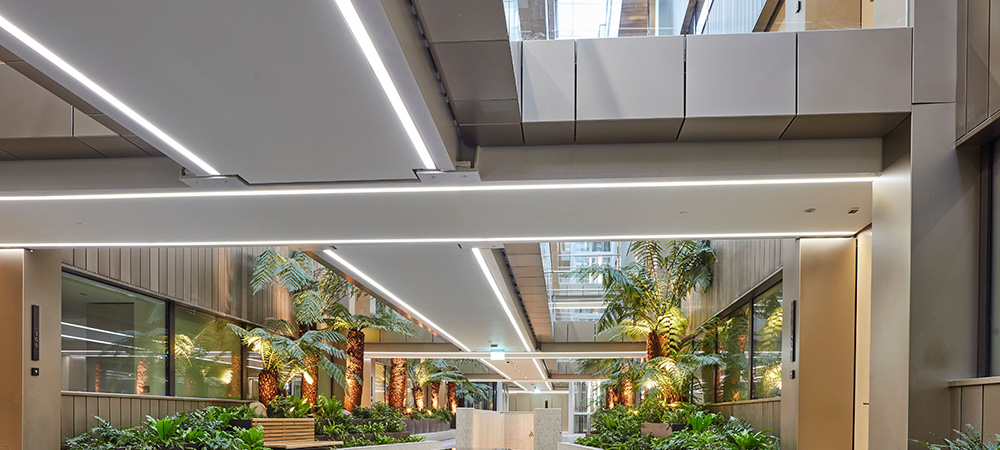Explore the visionary insights of Mark Parson, Project Director at HDR, a global design firm ranked number six among the world’s best design firms. With nearly two decades of expertise in building engineering services, Mark drives innovation across diverse projects, from residential to luxury hotels. Discover how HDR pioneers sustainable solutions, including smart technology integration, as showcased in the prestigious Marylebone Square project.

Reflecting on your career journey, what valuable lessons have you learned from any mistakes or challenges encountered along the way?
As a designer and engineer, delivering a project through from start to finish is key to learning valuable lessons. I have also learnt that collaboration, whether in your own team or with architects and contractors, is the most important factor in the successful delivery of a project.
From your experience, could you share insights into a project that stands out as your personal favourite, and what technological innovations or challenges made it particularly memorable or rewarding for you?
Several years ago, I worked on an office refurbishment project at Victoria Embankment. The façade was listed and had to be retained, bringing the challenge of having to maintain floor-to-floor heights (so that windows were still aligned); yet increasing the floor-to-ceiling heights to meet market expectations. This put pressure on the ceiling services, which needed to be condensed and designed in an unconventional way. This was when the industry was just starting to use Revit and design in the 3D environment, a major shift from the 2D days. Despite having to adjust and adapt to the new tool and design process, we used this technology to successfully overcome the coordination challenges. For me, this was a memorable and rewarding experience, being one of the first projects in the industry at the time to be fully designed in 3D.
Can you tell us a little about the recent Marylebone Square project?
Completed in December 2023, Marylebone Square is a mixed-use development located in the historic Marylebone neighbourhood of central London. The project comprises 54 luxury and 25 affordable apartments, and over 53,000 square feet of retail and wellness spaces. Developed by Concord London, the development aims to seamlessly integrate into the fabric of the local area while offering a diverse range of amenities for residents and the wider community. HDR led the comprehensive Building Engineering Services, including mechanical, electrical, vertical transportation, information technology and audiovisual; as well as public health, energy and sustainability. The scheme is designed to achieve a BREEAM Excellent rating, placing Marylebone Square within the top 10% of new buildings in the UK.
How did HDR incorporate home automation and other smart technologies into the Marylebone Square project to enhance living experiences and achieve sustainability goals?
Smart technology is incorporated throughout and serves a dual purpose, not only helping to meet ambitious sustainability goals by improving the building’s environmental performance but also elevating the experience of its users. Occupants are empowered to tailor spaces to meet their preferences and control the lighting, cooling, heating, metering and energy management via touchscreen controls or a phone smart app, which enables this task to be undertaken remotely. We sought to give residents access to convenient and user-friendly tools that allow them to make individual contributions to the overall sustainability of the development, by optimising energy usage and promoting mindful behaviours.
Could you explain how HDR used building physics and computational modelling to optimise the courtyard’s environment, and how smart engineering design contributed to energy efficiency?
This was a complex build, necessitating close collaboration to find innovative solutions to challenges. A striking five-storey courtyard beneath a glass canopy is the centrepiece, and this unique environment provided HDR with the opportunity to proactively develop smart engineering design. Through extensive coordination with the architect, structural engineer and contractor, we enabled several services to run below the elevated walkways, simultaneously maximising the flow of natural light while servicing various spaces with water, electricity, heating and cooling.
We used our Building Physics and CFD expertise to provide a detailed analysis of temperatures, air flows, air stagnation and solar penetration to inform a design that creates a suitable indoor climate for the occupants as well as for plants and trees. With discrete inlets at the bottom and openings at the roof level, the courtyard design utilises the stack effect to promote air movement within the space as well as maintain a naturally ventilated environment. As part of the ventilation strategy for the apartments, the heat recovery systems draw fresh air in from the courtyard, rather than from the street-facing facades.
What specific technological strategies did HDR employ to achieve the BREEAM Excellent rating and reduced carbon emissions at Marylebone Square, while maintaining comfort and wellbeing for occupants?
Our objective for Marylebone Square is to make a meaningful difference towards net zero carbon emission goals while providing a leading-edge tenant and community well-being offering. We implemented a range of features, including the installation of an extensive bio-roof with solar photovoltaic panels (with over 200 sq m of PV at roof level in total), greywater recycling systems, and the provision of electric vehicle charging stations to over 150 parking bays. Technology was also employed for home automation, with a tablet situated at the entrance of every apartment whereby occupants can choose a ‘scene setting’ for lighting as well as being able to customise heating and cooling.
Considering the rapid advancements in technology, how do you envision the role of emerging technologies shaping the future of planning and design in the built environment, particularly in projects like Marylebone Square?
Integrated smart systems and sustainable solutions will drive urban development towards greater efficiency, resilience and environmental consciousness. Embracing these technologies allows the industry to address challenges and create vibrant, sustainable spaces that cater to the needs of current and future generations and promote overall well-being.




